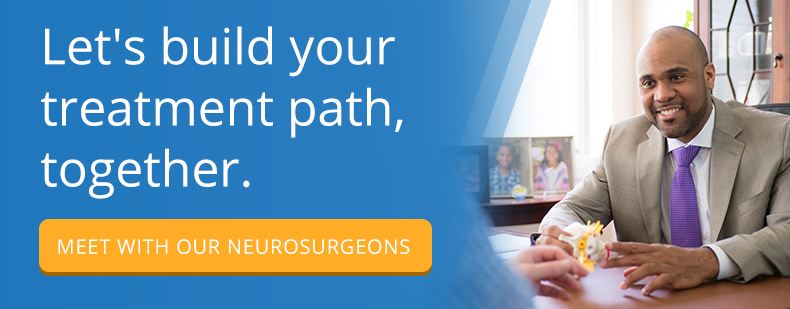As a parent, your child’s health is one of your primary concerns, which is why it can be difficult when he or she is unwell or injured. The good news is that Chiari malformation in children is manageable, and there are experts who specialize in the treatment of pediatric neurological conditions. By educating yourself about Chiari malformation in children, you can feel more at ease about your child’s condition, allowing you to support him or her as only a parent can.
About Chiari Malformation
A short discussion of anatomy and fetal development can be useful to help you better understand your child’s condition. When a baby grows, the skull and brain grow together. The result is protective bone surrounding the brain, usually with just enough room for everything inside.
However, sometimes the skull does not grow as much as it should, and there is not enough room for the area of the brain known as the cerebellum to fit. This is a Chiari malformation. Because of the lack of space, the cerebellum is displaced through an opening at the base of the skull, the foramen magnum. This opening is also where the spinal cord passes through, and there isn’t room for both it and the cerebellum.
The out-of-place cerebellum may be putting pressure on your child’s spinal cord, and/or it may be blocking the flow of cerebrospinal fluid (CSF), which flows around the brain and spinal cord. This is what has led to your child’s symptoms and is the reason treatment may be necessary.
Treatment Options
Oftentimes, Chiari malformation in children goes undetected because symptoms are mild or nonexistent. Asymptomatic malformations are often monitored without treatment, and mild cases may be managed using medications and lifestyle modification.
However, many Chiari malformation patients will require surgical intervention to alleviate symptoms and prevent further damage. The goal of surgery for Chiari malformation in children is the same as in adults: to create more space and alleviate pressure.
Dural Opening Chiari Decompression Surgery
The most common procedure is a dural opening Chiari decompression. The surgeon removes a small section of the skull and places a flexible patch, resulting in more space for the cerebellum and, typically, a resolution or reduction in symptoms.
This procedure is often performed in conjunction with another surgery called a cervical laminectomy. In a cervical laminectomy, the surgeon removes a small portion of the uppermost vertebrae, again creating more space and removing pressure.
Both dural opening Chiari decompression surgery and cervical laminectomy surgery are considered traditional surgical approaches and are very effective for treating Chiari malformation in children.
Minimally Invasive Chiari Decompression Surgery
Thanks to advancements in technology and research, some surgeons now use what is known as minimally invasive techniques. The surgeries are similar, except they require smaller incisions, cause less impact on the surrounding structures, and typically heal more quickly and with less pain.
Things to Keep in Mind
Concern for your child’s health can be stressful for you as a parent, and self-education about Chiari malformation is a great way to help you feel more confident and comfortable with the situation. The following tips may be helpful for you during this period:
- You are not in this alone. It is important to have a support system for yourself, including family, friends and your child’s healthcare team. You may even wish to find other parents of children with Chiari malformation to reach out to.
- Don’t believe everything you read online. Educating yourself about Chiari malformation is a great idea, but be aware of the source of your information. Your child’s doctor can help you find reputable information online if you are having difficulty.
- Speak candidly with your child about his or her wishes. Your child may not want others to know about his or her condition for fear of being treated differently. Sometimes, however, adults may need to know for your child’s health and safety. Explain why, and your child will likely be more understanding.
- Focus on the positives. If your child can’t participate in an activity, find something else he or she can do instead. When he or she doesn’t feel well, share something you both enjoy, such as a game or a favorite meal, to turn both of your energy to something fun.
- Don’t be alarmed by your child’s appearance following surgery. Realize that your child may look vulnerable and unwell immediately following surgery, and this can be a distressing image for a parent. If you prepare yourself for the possibility beforehand, it will be less stressful for you, should that be the case.
- You are your child’s biggest advocate. If you are uncomfortable with something (or he or she is uncomfortable), never be afraid to speak up. Always ask any question you or your child has on your mind or raise any concerns. Your child’s doctor is committed to making sure the both of you are comfortable throughout the process.
Continue the Path to Recovery Together
Your decision to learn more about your child’s Chiari malformation demonstrates your compassion and concern as a parent. The more you understand about Chiari malformation in children and the treatment options, the more you will be able to help your child comprehend what he or she is experiencing and focus on the most important thing: getting better.


